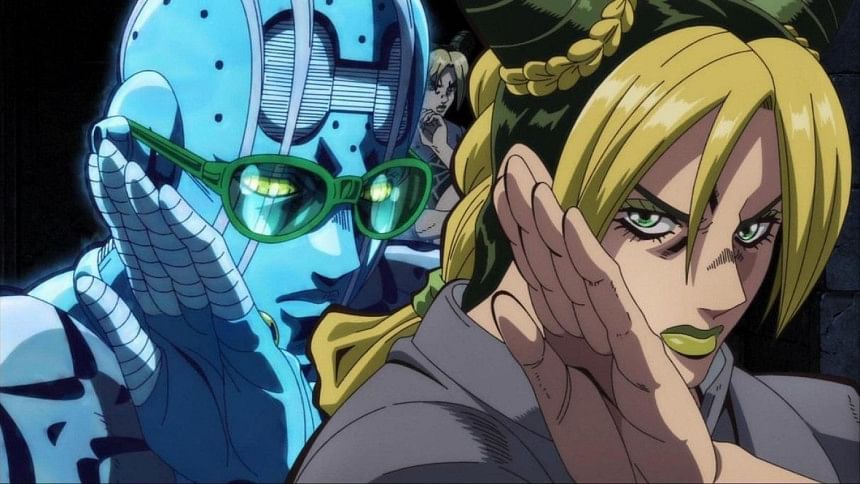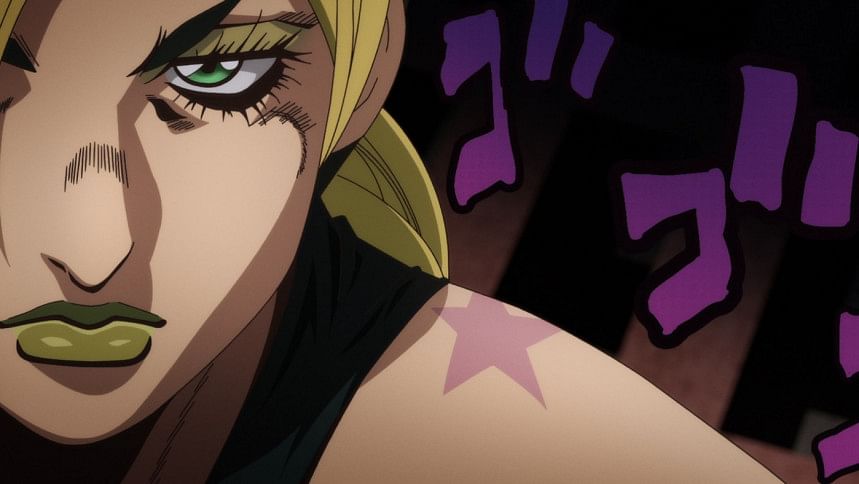Stone Ocean is classic Jojo at its finest

Since its conception in 1987, Jojo's Bizarre Adventure has been captivating anime fans around the world. Its trademark front of flamboyant, muscular men with their exuberant and rich personalities has, for better or worse, crafted a distinct image for the franchise — one that is truly deserving of the connotation of "bizarre".
Stone Ocean, the sixth and most recently adapted part of the original series, takes the bizarre to newer heights with a completely fresh twist — the protagonist and supporting characters are predominantly female this time around.
The story chronicles Jolyne Cujoh, a brash and hot-headed 19-year-old who is wrongly imprisoned and sentenced to 15 years in prison. Similar to most of her predecessors in the previous parts of the series, she eventually awakens her "Stand" ability.
In the Jojo universe, a Stand is essentially the personification of one's soul, and the series' MacGuffin. Unsurprisingly, the prison is crawling with enemy Stand users, and Jolyne has to team up with a motley crew of misfits in order to defeat their malevolent foes.
One of the aspects of Stone Ocean that might take viewers by surprise is that the story is one of constant existential terror. Although the previous parts in the story had high stakes as well, Stone Ocean goes an extra mile to vividly portray the characters' vulnerability and helplessness in dire situations.
Unlike previously seen Stand powers, none of the main cast have the ability to stop time or overpower their enemies with brute force alone. Instead, various battles unfold as a series of deductions and mind games before being settled with physicality.
This narrative choice allows the author, Hirohiko Araki, to introduce some of the most original and fun-to-watch Stands in the Jojo universe. Araki's playfulness with pop culture makes this even more delightful, given that Stands are named after classic bands, artists, and songs — Marilyn Manson, Foo Fighters, Limp Bizkit, to name a few.
Moreover, Jolyne Cujoh, the first female Jojo in the franchise, is one of the leading reasons behind Stone Ocean's success. Her unceremonious introduction to the world of evil serves to flesh out her naivety, initially putting her at the mercy of cunning inmates looking to take advantage of her.

But it doesn't take long for Jolyne to gain self-confidence and adapt to the harsh nature of prison life and the comparatively harsher world of Stand battles. Her cunningness and determination allow her to maximise the potential of her Stand, effectively using it to communicate with others, steal items, and create defence systems.
David Production's work on the anime is also as eccentric as ever — idiosyncratic colour choices and signature graphic art style make the adaptation seem lively. The music also hits the nail on the head, elevating the bingeing experience to groovier heights.
However, when compared to some of the previous parts, the animation is left somewhat lacking, often feeling stiffer than what is normal for the show. The use of CGI in certain key moments raises the question if production was a bit rushed as well. In addition, Netflix's batch release model and lack of promotional marketing to date has dulled the social capital of the anime.
But despite these caveats, Jojo's Bizarre Adventure: Stone Ocean thrives on the strength of its story, off-kilter aesthetic, and the dynamic stylings of its masterful author.
Ayaan loves to read dinosaur comics and poorly-written manga. Reach him at [email protected]

 For all latest news, follow The Daily Star's Google News channel.
For all latest news, follow The Daily Star's Google News channel. 








Comments